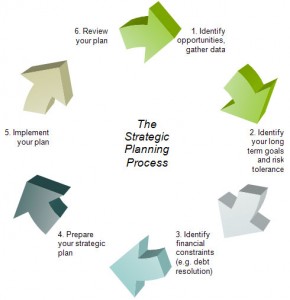
Here are some essential strategies that will help you achieve financial independence. It is important to get solid advice to design a plan that incorporates planning values such as those noted herein.
Separate your savings from your investments. Before you begin to invest for a long-term financial goal, you’ll need to save for an emergency fund – up to six months’ worth of your salary. Then you are prepared for an unexpected expense such as an engine job on the car, a leaky roof or loss of employment. Otherwise, you may need to tap into your investments intended for retirement or other purposes.
Budget based on your income, not on your desire. Plan to spend less than you earn and don’t take on debt that your future income cannot service. Budgeting is based on your income, not on your past spending habits. Total your monthly expenses such as housing, utilities, food, clothing, child-care, transportation and debt repayment. This sum should not exceed 75% of your after-tax income.
Invest by paying yourself first. You will only beat the habit of procrastination if you focus on paying yourself first. A rule of thumb: save 10% to 20% of every paycheck. You can achieve such investing by purchasing units in a potentially promising investment fund systematically, using an automatic payment program.
Use beneficial debt to build equity. Minimize and pay off consumer debts – monies borrowed to purchase cars, clothing, vacations, stereos and other gadgets that devalue over time. Acceptable debt can help you achieve an education or mortgage a home.
Differentiate your risks. Inflation risk will compete with long-term investment risk. Equity investment funds or the stocks of many companies are not guaranteed, meaning there is a risk. Yet equities have a much better chance to outpace the adverse risk of inflation—or as some have humorously termed shrinkflation—when compared to a savings account over time. Inflation is the single most significant long-term risk. At 4% over 20 years, inflation will cut the value of today’s purchasing power by half.
Determine to diversify. A properly diversified portfolio will hold several types of funds, including a mix of equity funds. Equity funds should differ in terms of what sector of the economy they invest in, such as agriculture, technology, mining, or finance. Though each fund would hold many stocks, make sure they diversify among the various sectors. One sector may gain while another may lose some value, balancing over time. Equity funds can also diversify by country (such as holding domestic, US and global funds); investment style (such as growth funds or value funds); or company size (such as small, mid, or large-cap). Consider adding bond funds to the mix to diversify even more.
Optimize your portfolio. If you can optimize your portfolio, you may minimize the risks to help your return on investment. To truly optimize, one needs in-depth knowledge only obtainable from a professional whose job is to study funds as a speciality. To diversify in a balanced manner, one needs to weigh many factors concerning economic sectors, managers’ styles, company size, and foreign economic conditions.

















